9 Orchid Leaf Problems To Watch Out For: Diagnose & Cure Common Issues
If the leaves on your orchid aren't looking as lush and green as usual, this can indicate a problem with the plant. Spot and solve issues before it's too late.

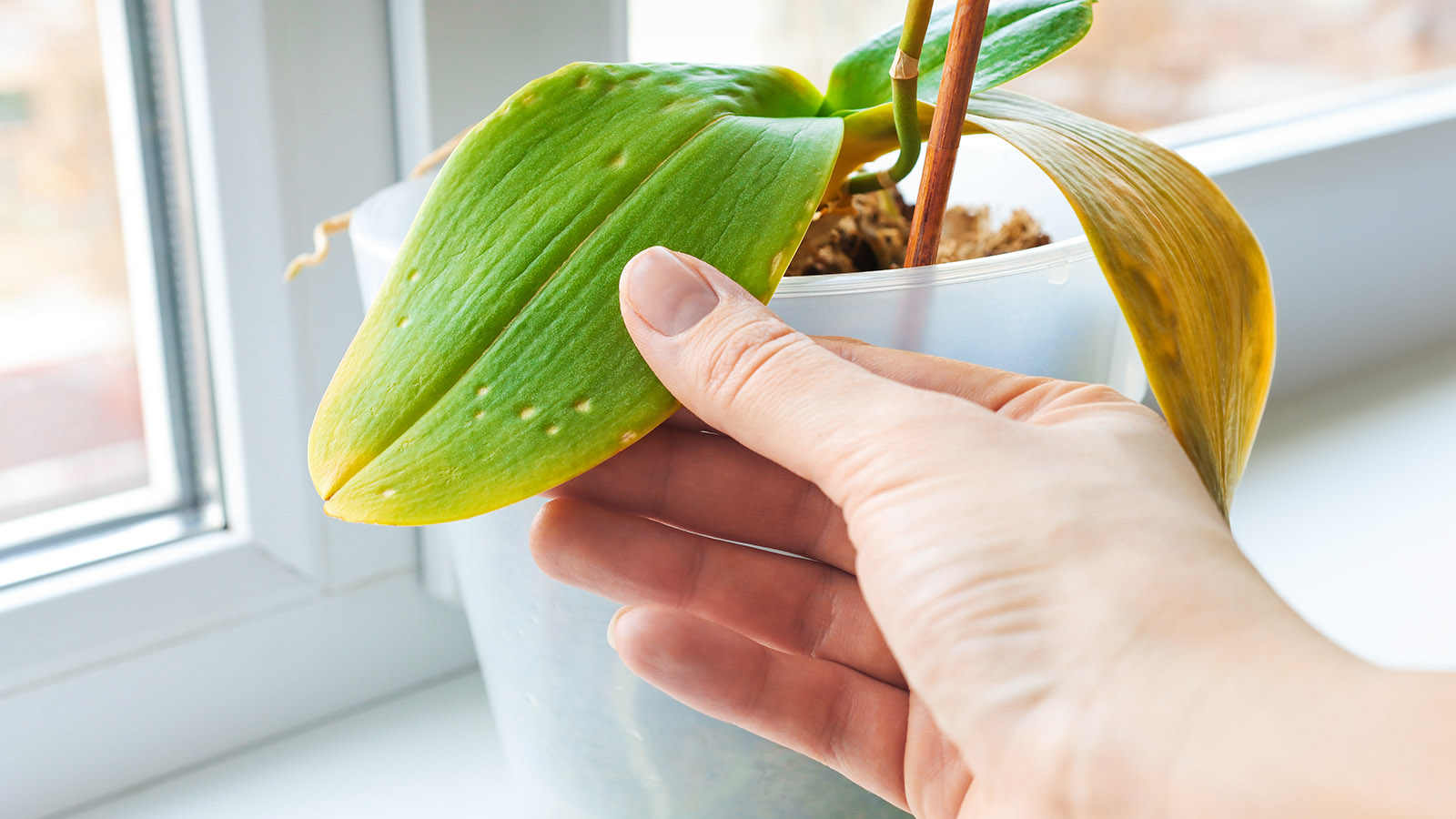
Orchids are among the most beautiful houseplants available, and they are not as difficult to care for as their prima donna reputation suggests. If your home environment can meet their basic care needs, then they are surprisingly low maintenance. But if you are noticing orchid leaf problems, then something is not right, and you need to diagnose and correct the issue before it's too late.
Did you know that leaf issues can provide clues as to wider orchid problems? They can point the finger toward things like improper orchid care, common diseases, or pests – problems that are usually fixable if identified quickly and treated appropriately.
Learning what these common orchid leaf problems indicate and the plant issues they suggest can help you identify and treat them before your orchid suffers significant damage.
Common Orchid Leaf Problems
No matter what types of orchids you have, plants may experience leaf problems. But this has a hidden benefit: these issues can help you diagnose a larger plant problem. Often, the best way to figure out what is going on with your orchid leaves is by walking through a process of elimination. Take a look at the leaves and choose the section below that best applies.
1. Orchid Leaves Turning Yellow
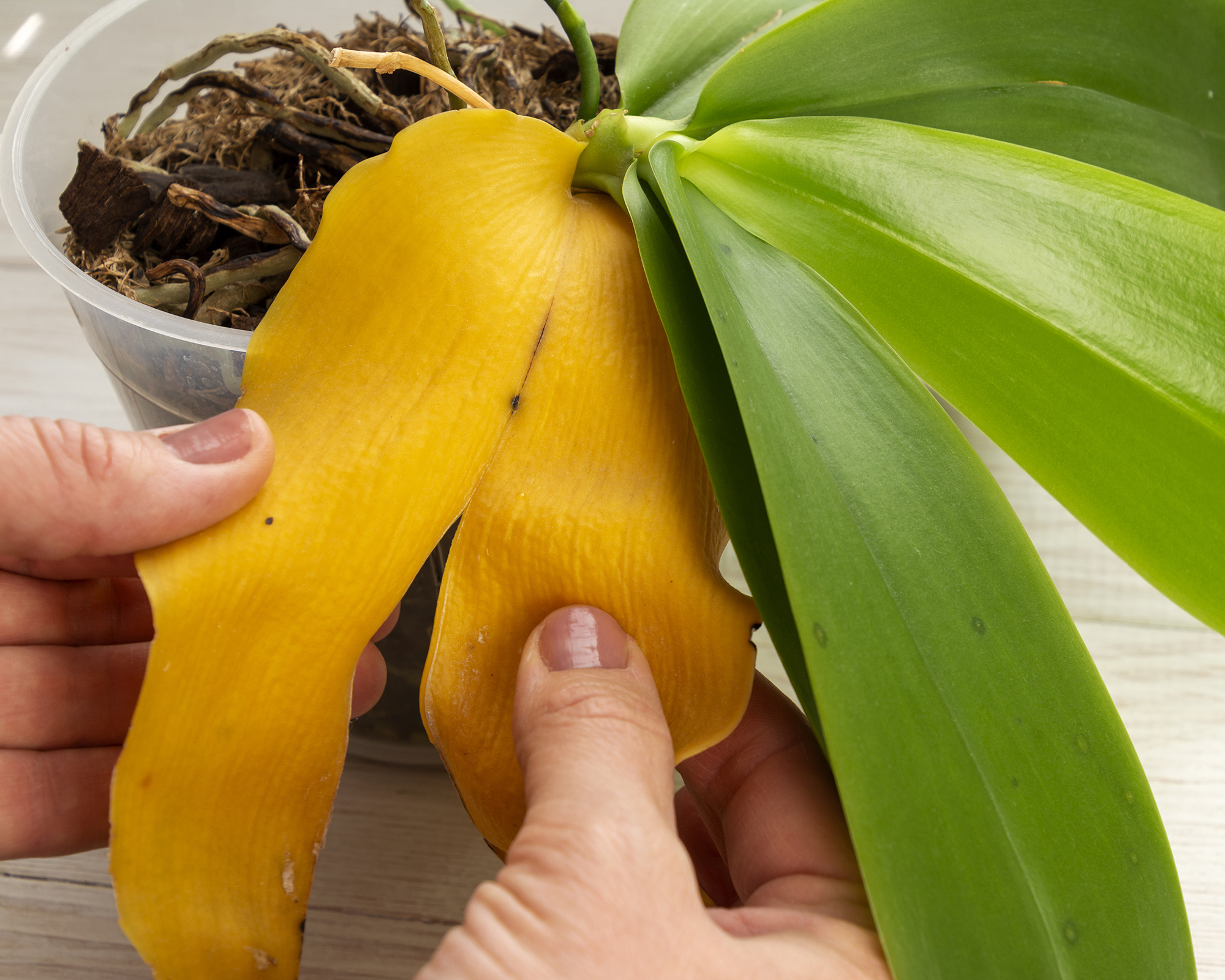
One of the most common issues is orchid leaves turning yellow. Now, be careful with this one since yellow-green leaves are perfectly normal and healthy for most orchid varieties. And yellowing mature leaves on the lower part of the stem are also normal, as older leaves yellow, die, and fall off to allow new growth.
However, if young leaves are turning true yellow, this is an indication that the plant is likely suffering from cultural care problems. If this is your plant, be sure you are aware of your orchid’s needs: potting material offering tip-top drainage (such as Duspro Premium Orchid Potting Mix, available on Amazon), sufficient water to keep the plant from drying out completely, lots of indirect sunlight, higher temperatures during the day and lower ones during the night – but not too hot or cold – and fertilizer. When fertilizing orchids, use limited applications of feed during the growing season only.
Failing any one of these, orchid leaves can turn yellow, indicating too much water or direct sun, too hot or cold temperatures, or improper fertilizer applications. Simply remedy the care the plant is receiving.
Sign up for the Gardening Know How newsletter today and receive a free copy of our e-book "How to Grow Delicious Tomatoes".
Yellow leaves can also signal infestations of insect pests. Spraying the leaves with neem oil, available on Amazon, and wiping them will take care of this issue.
2. Orchid Leaves Turning Brown
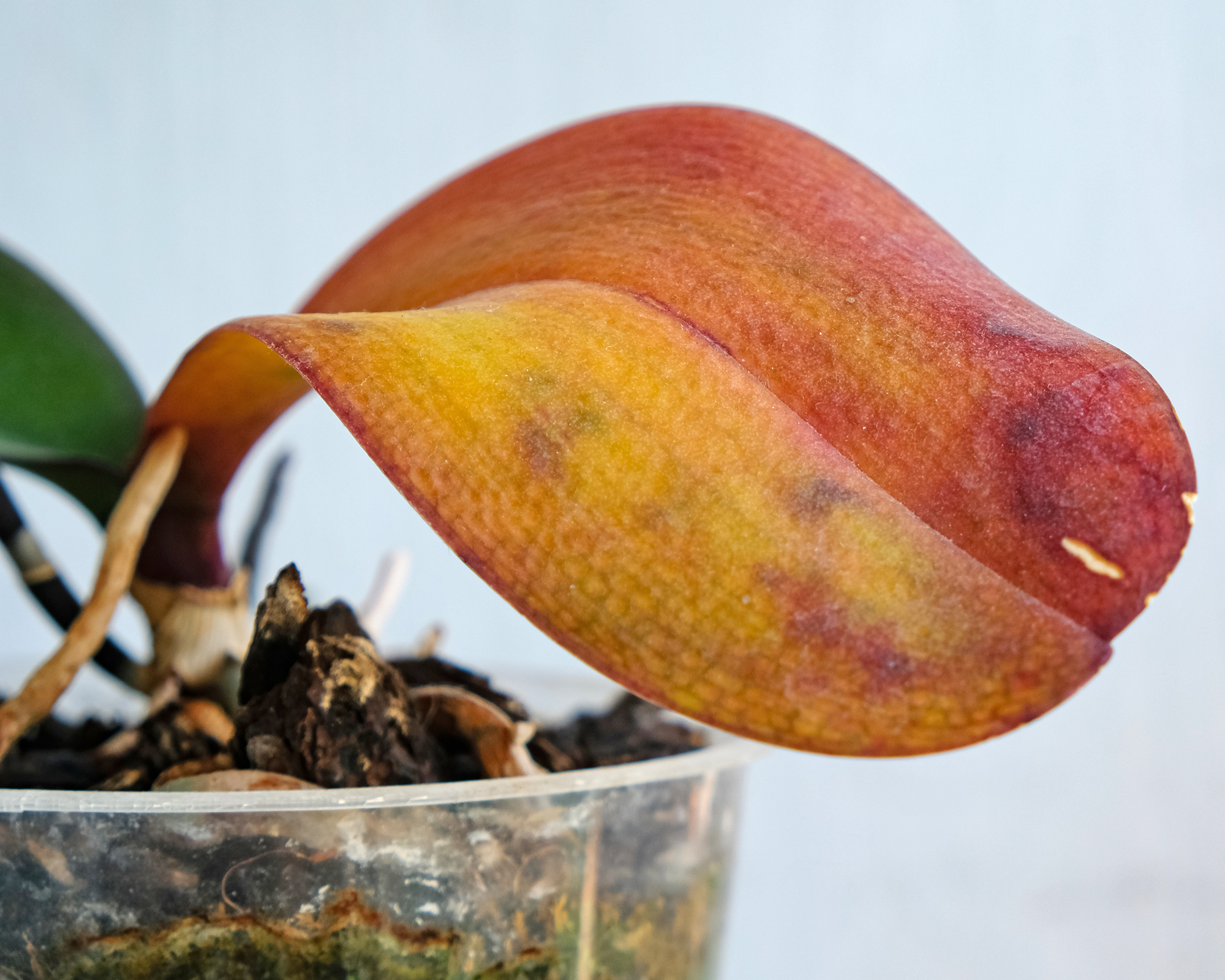
If one or more orchid leaves turn brown, this also signals a cultural care problem. A brown orchid leaf is a soon-to-be dead orchid leaf. The question is: why did it die? The answer is probably one of the usual suspects.
Orchid leaves can object to the same improper cultural care by turning brown as by turning yellow. Too much or too little water can result in browning leaves. It's important to know how to water orchids correctly; however, the issue can sometimes be caused by improper drainage. Additionally, brown leaves can be caused by too much direct sun, temperatures that are too hot or cold, or too much fertilizer. Insect pests can also cause orchid leaves to brown.
Walk through every step of your orchid care features, from soil to location to water to fertilizer. Adjust whatever isn’t ideal to assist your plant in regaining top health. Although brown leaves can also be caused by being too root-bound or transplant shock, the most common causes all involve cultural care.
3. Spots on Orchid Leaves
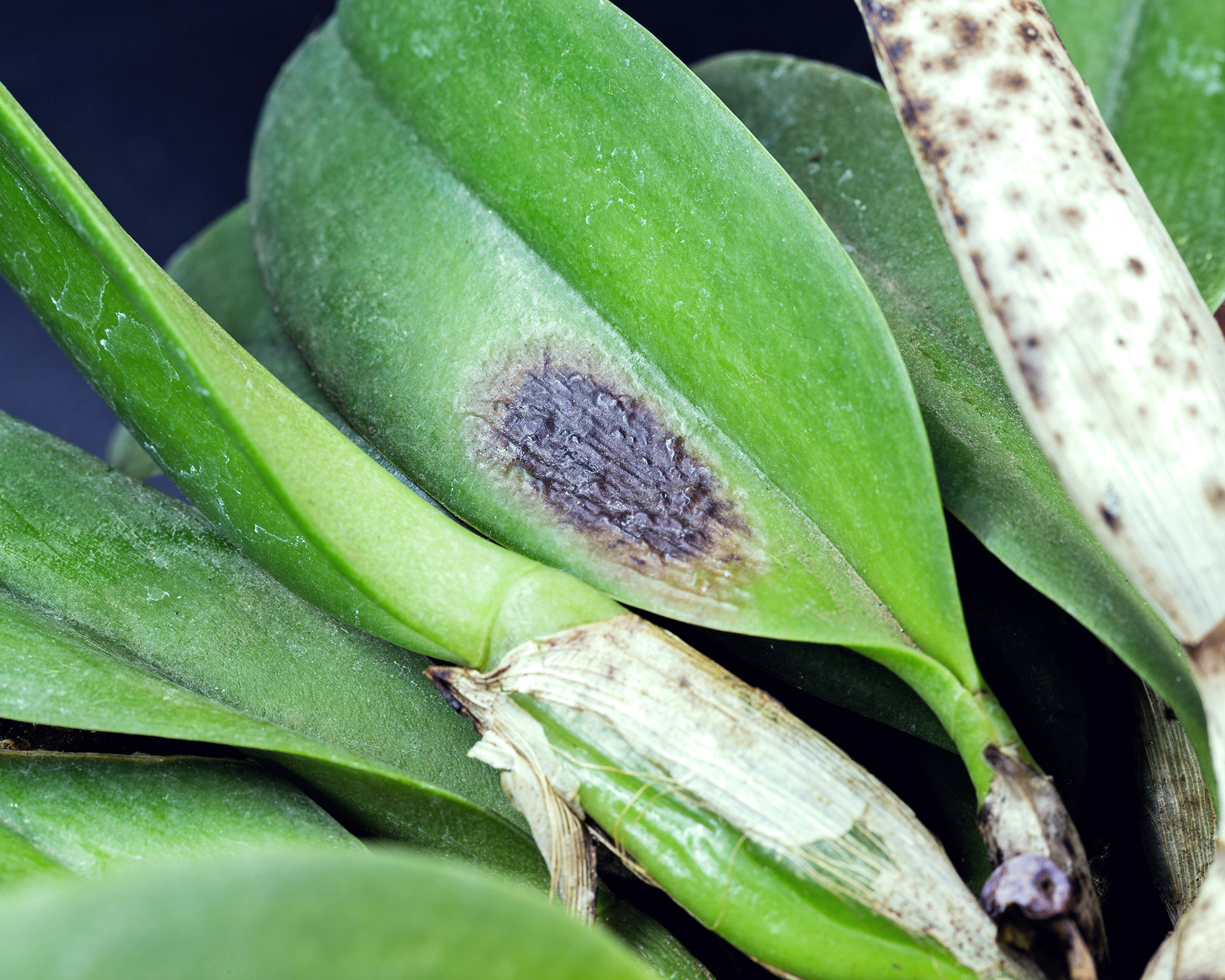
Look out for both dark and white spots on leaves, as there are several causes for each condition. Note that oncidium orchids sometimes naturally get tiny dark spots that do not need treatment.
In the case of dark spots, if they are large and irregular, they likely signal a fungal infection, usually one of the soft rots like black root rot. Clip off the infected parts of leaves, then treat the remaining foliage with a fungicide. A copper fungicide is best, such as Bonide Captain Jack Copper Fungicide, available at Amazon.
Keep your eye on the plant to catch new infections. If the dark spots are small and outlined in yellow, your plant has a bacterial infection. Treat with a bactericide, such as Hydrofarm Physan from Amazon, and move it to a spot with more air movement.
White spots on orchid leaves is a different matter entirely. The most common cause of white spots on orchid foliage is mealybugs. Generally, those spots are not spots at all but tiny insect pests that, clustered together, look like white spots. Wipe them off with a cotton ball soaked in isopropyl alcohol, which is inexpensive to buy from Amazon.
Another reason for white spots on orchid leaves is excess iron in the water you are using to irrigate them. Flush the growing medium, then switch to using collected rainwater for irrigation.
4. Wrinkled Orchid Leaves
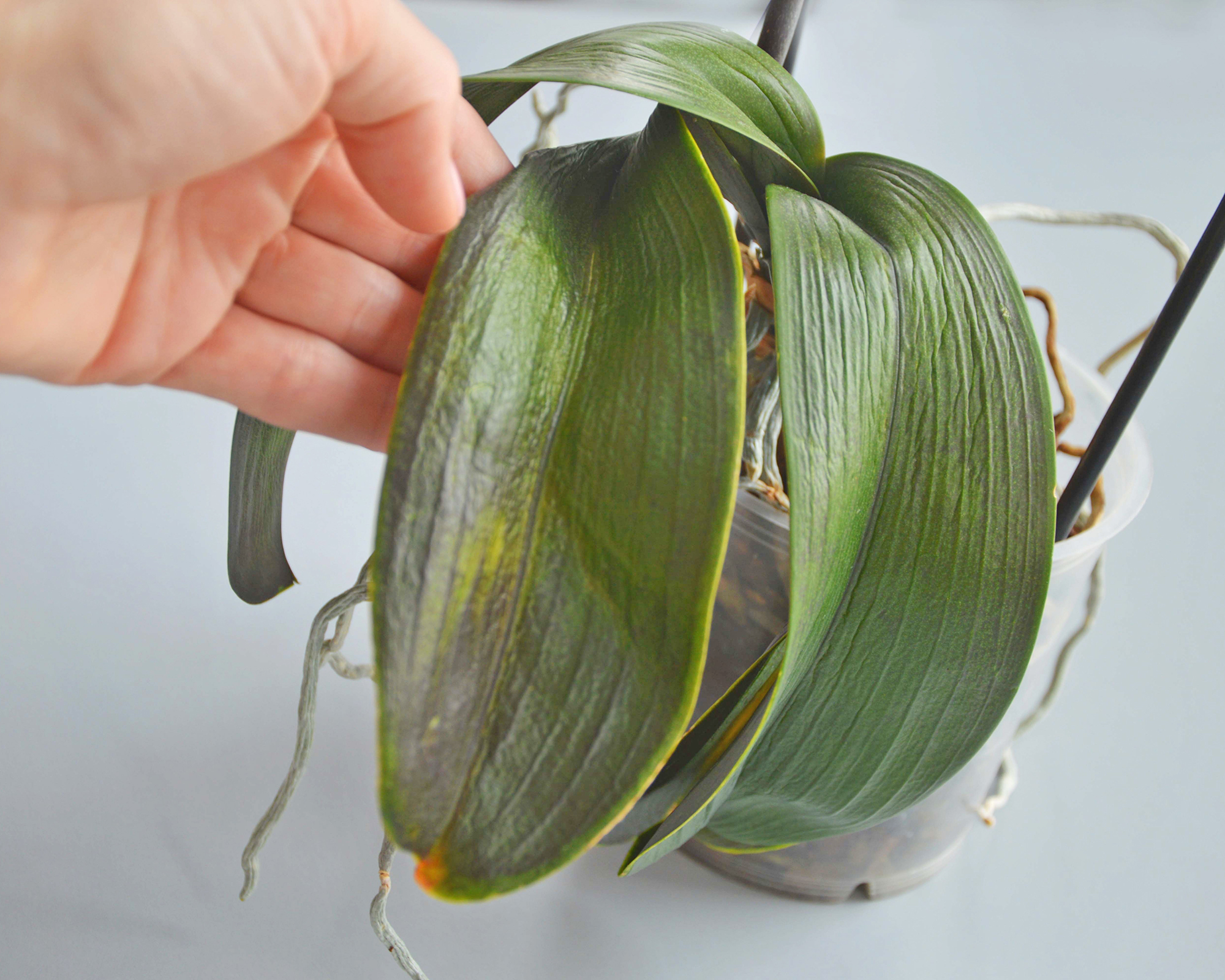
If you have wrinkled orchid leaves, the same old cultural care matters are likely at fault. The most common issues are too much or too little water, too much sunshine, too much fertilizer, or dramatic changes in light, temperature, or humidity. It might also be sap-sucking insects like aphids, scale, or thrips. Look for the bugs themselves on the leaves and use neem oil spray to get rid of them.
5. Orchid Leaves Droopy
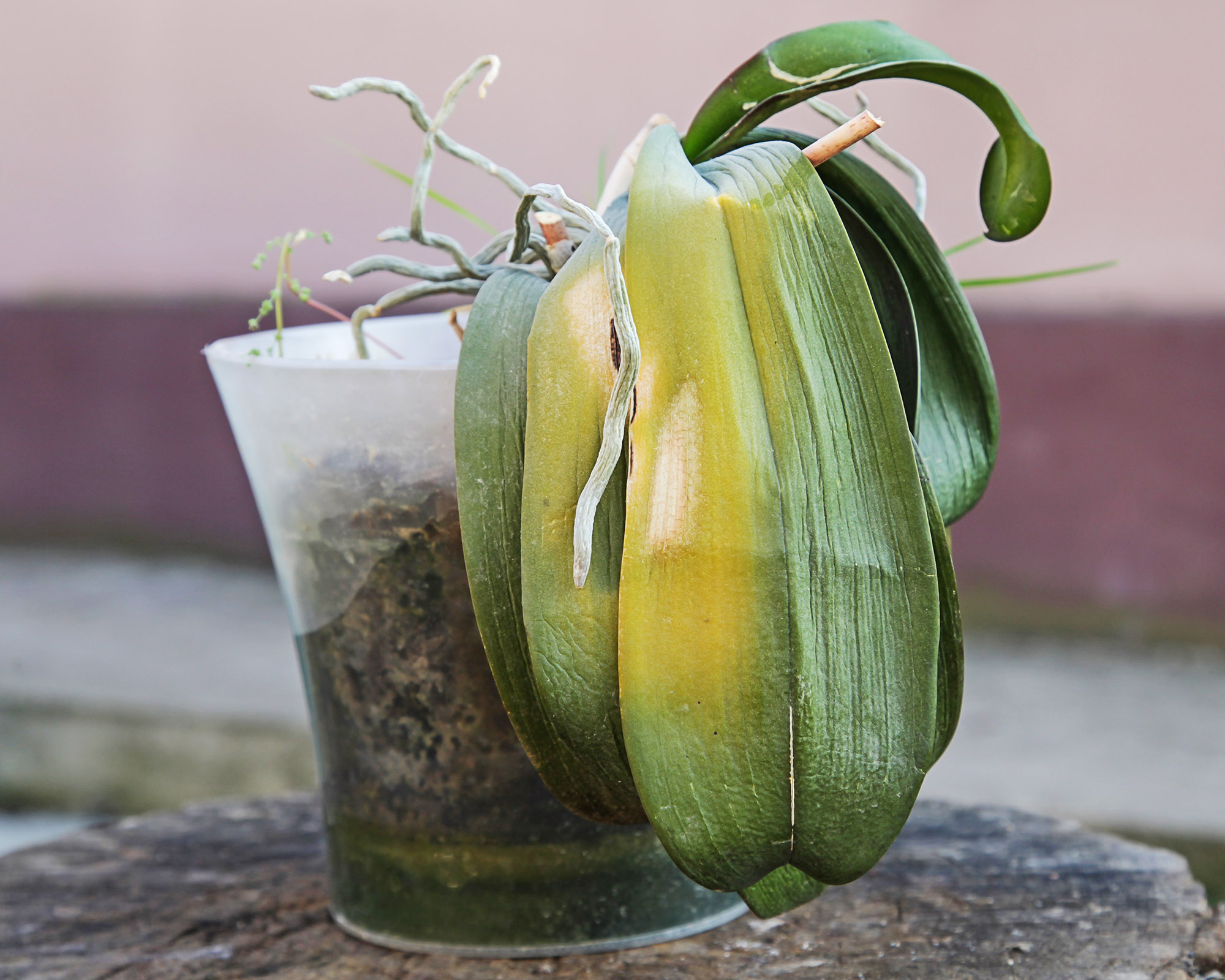
This is another indication of improper cultural care, usually too much water (or poor soil drainage), causing root rot. Insufficient water can also cause limp leaves.
Up your watering game by using these Vanslogreen self-watering orchid pots from Amazon, which have a reservoir at the bottom and holes in the sides for aeration.
If adjusting watering practices doesn't help, then repotting orchids can help resolve the issue.
6. Orchid Leaves Curling
Orchid leaves curl for a variety of reasons, most of them cultural care issues. If your orchid leaves start to curl, review how much water and light you are providing, temperature and humidity levels, and check the foliage for pests.
7. Orchid Leaves Falling Off
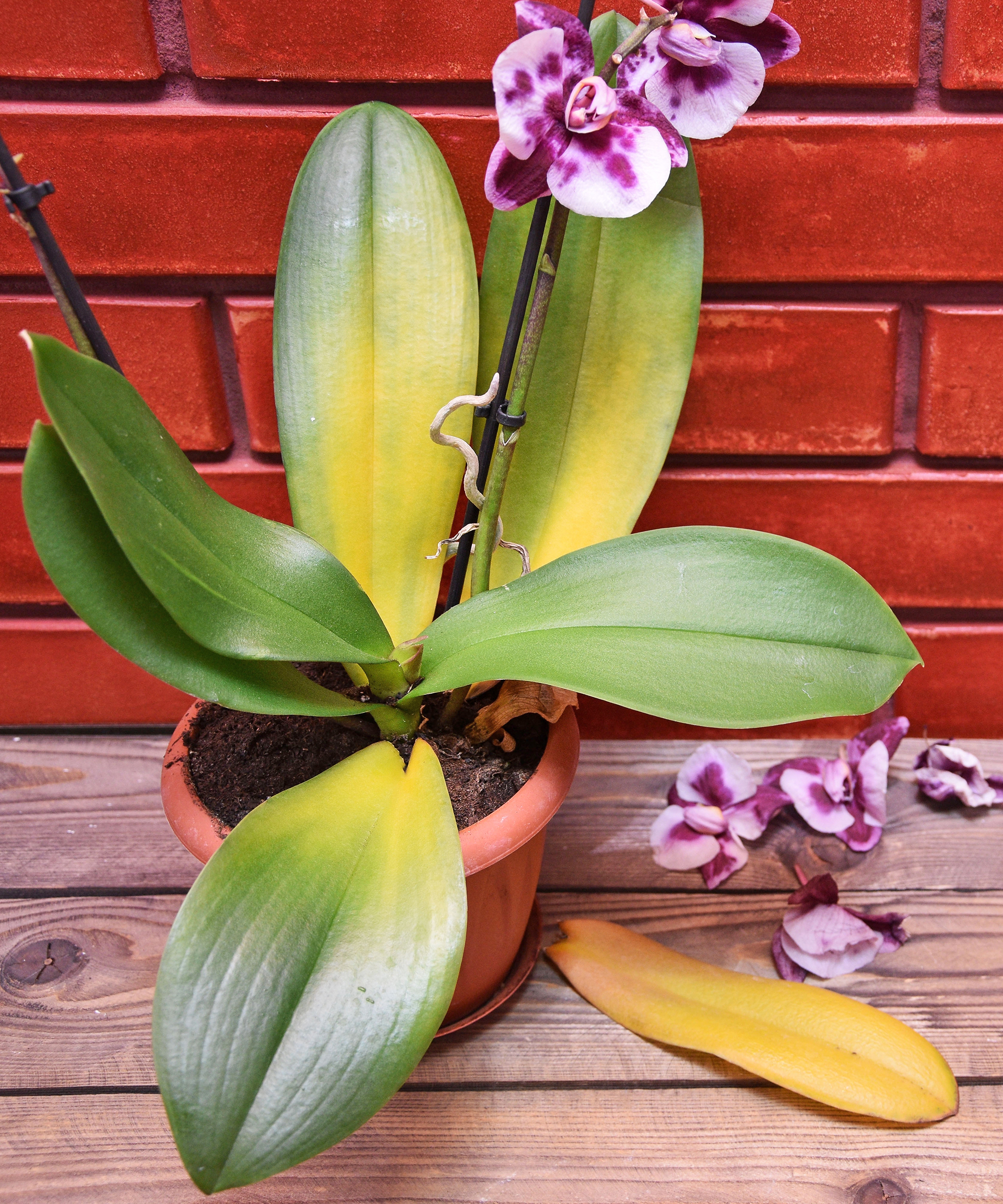
Are your orchid leaves falling off? Improper watering or fertilizing is the best-case scenario, since it isn’t difficult to remedy. The worst-case scenario is bacterial or fungal diseases. In the latter case, more work is required. Remove all affected leaves and treat the plant with a broad-spectrum fungicide or bactericide. Move the plant into a space where there is more air circulating, where the temperature stays between 65 and 80°F (18 and 26°C).
8. Sunburned Orchid Leaves
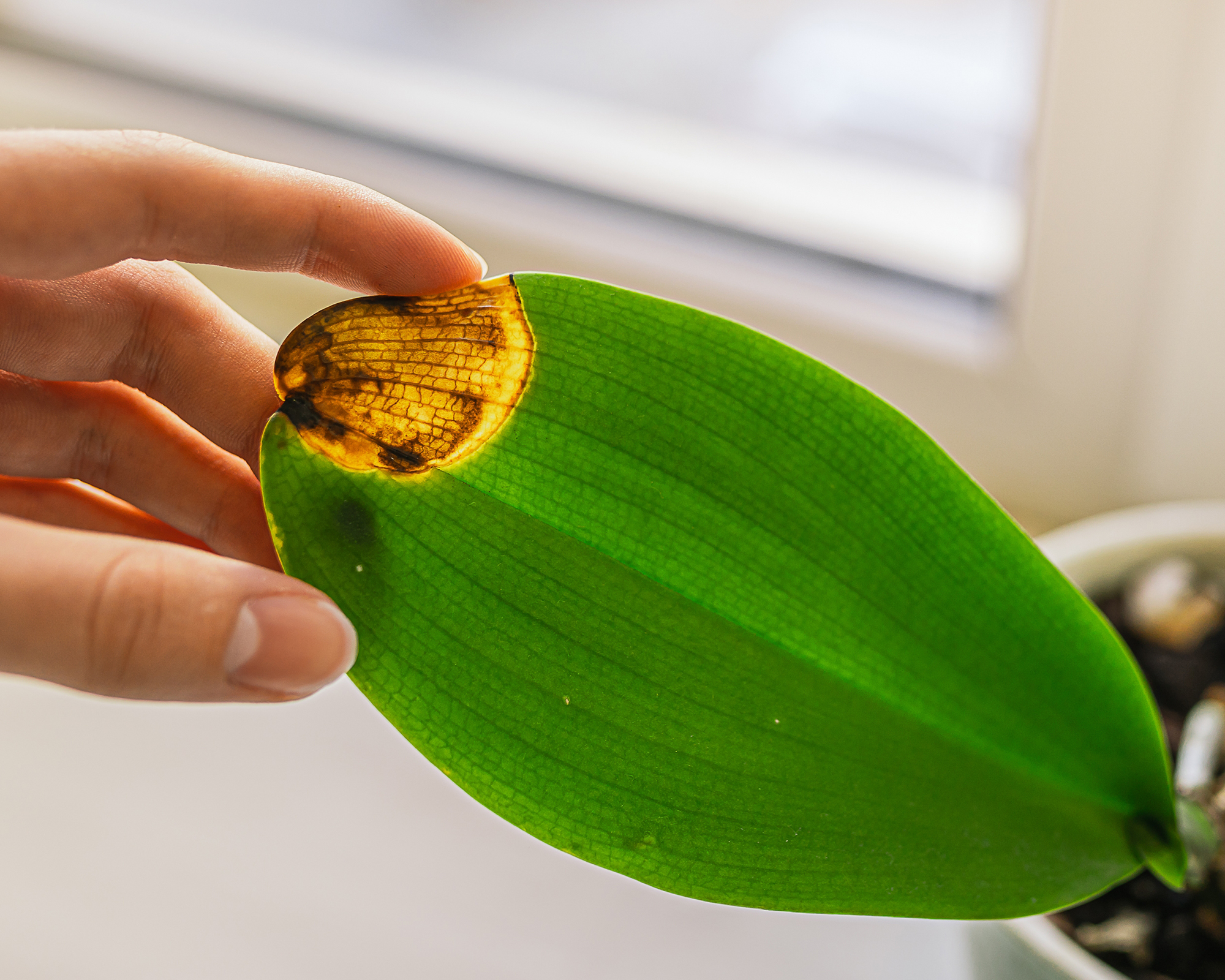
There is not much explaining to do when it comes to sunburned orchid leaves. You have stationed the plant where it gets too much sun or light. This doesn’t necessarily mean that it is in direct sun, just that it is suddenly exposed to more light than it has been used to. The easy fix is moving the plant.
9. Sticky Orchid Leaves
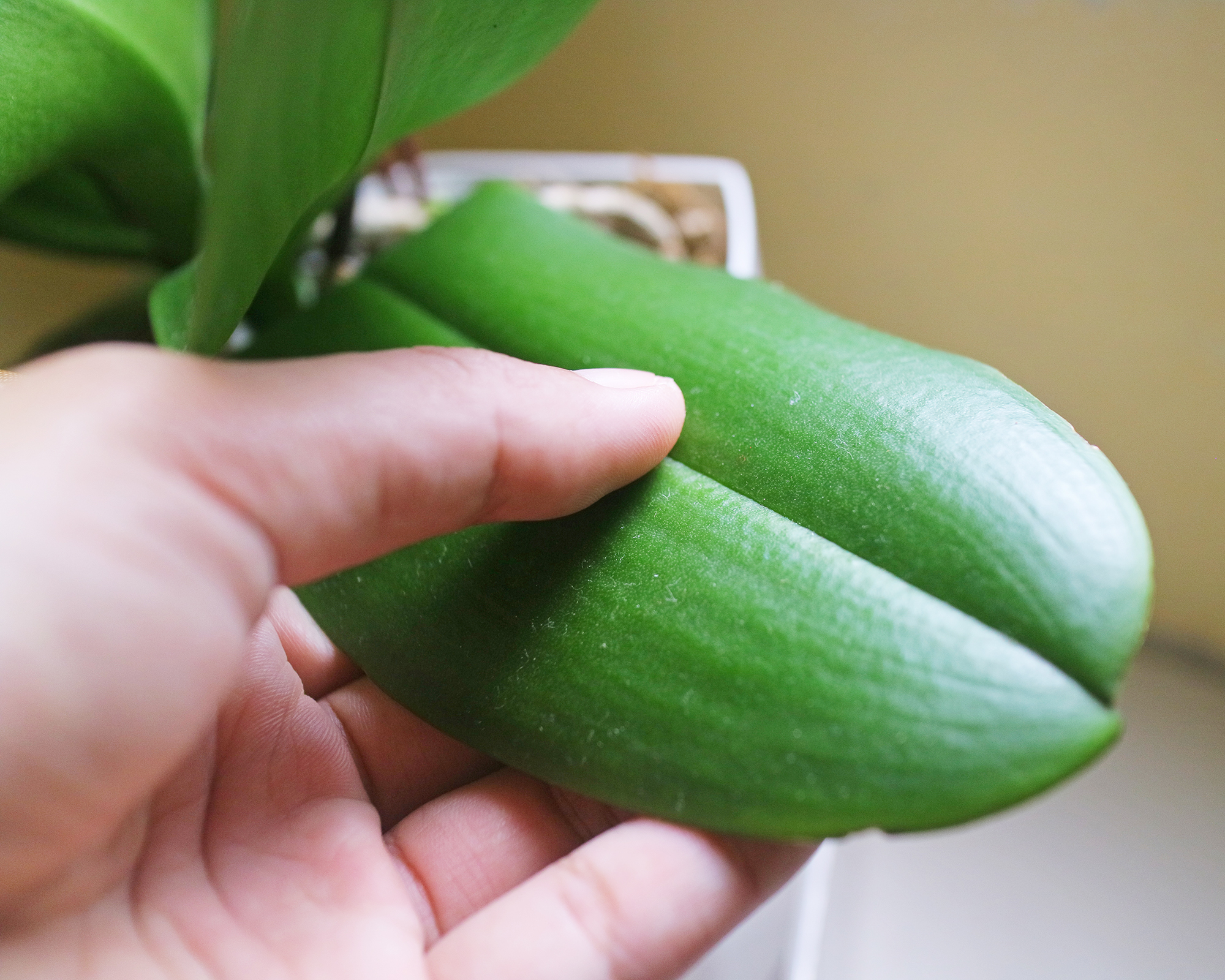
There’s something icky about sticky orchid leaves that can make an owner fearful for their plant. But generally, sticky leaves do not spell disaster. Most of the time, the sticky stuff is the honeydew left on the leaves by sucking insect pests like aphids or mealybugs. Look for ants on the plant, as honeydew attracts them. Inspect the entire plant and wipe off all bugs.
How to Treat Problem Leaves
All problem leaves that are diseased should be removed and disposed of promptly. If the leaf is simply reacting to cultural care issues, there is no reason to take off the leaves.
If the cause of the issue is excess water that results from improper potting material, it is a good idea to repot the plant. The same is true if the problem is being caused by root overcrowding in the current container.

Teo Spengler is a master gardener and a docent at the San Francisco Botanical Garden, where she hosts public tours. She has studied horticulture and written about nature, trees, plants, and gardening for more than two decades, following a career as an attorney and legal writer. Her extended family includes some 30 houseplants and hundreds of outdoor plants, including 250 trees, which are her main passion. Spengler currently splits her life between San Francisco and the French Basque Country, though she was raised in Alaska, giving her experience of gardening in a range of climates.